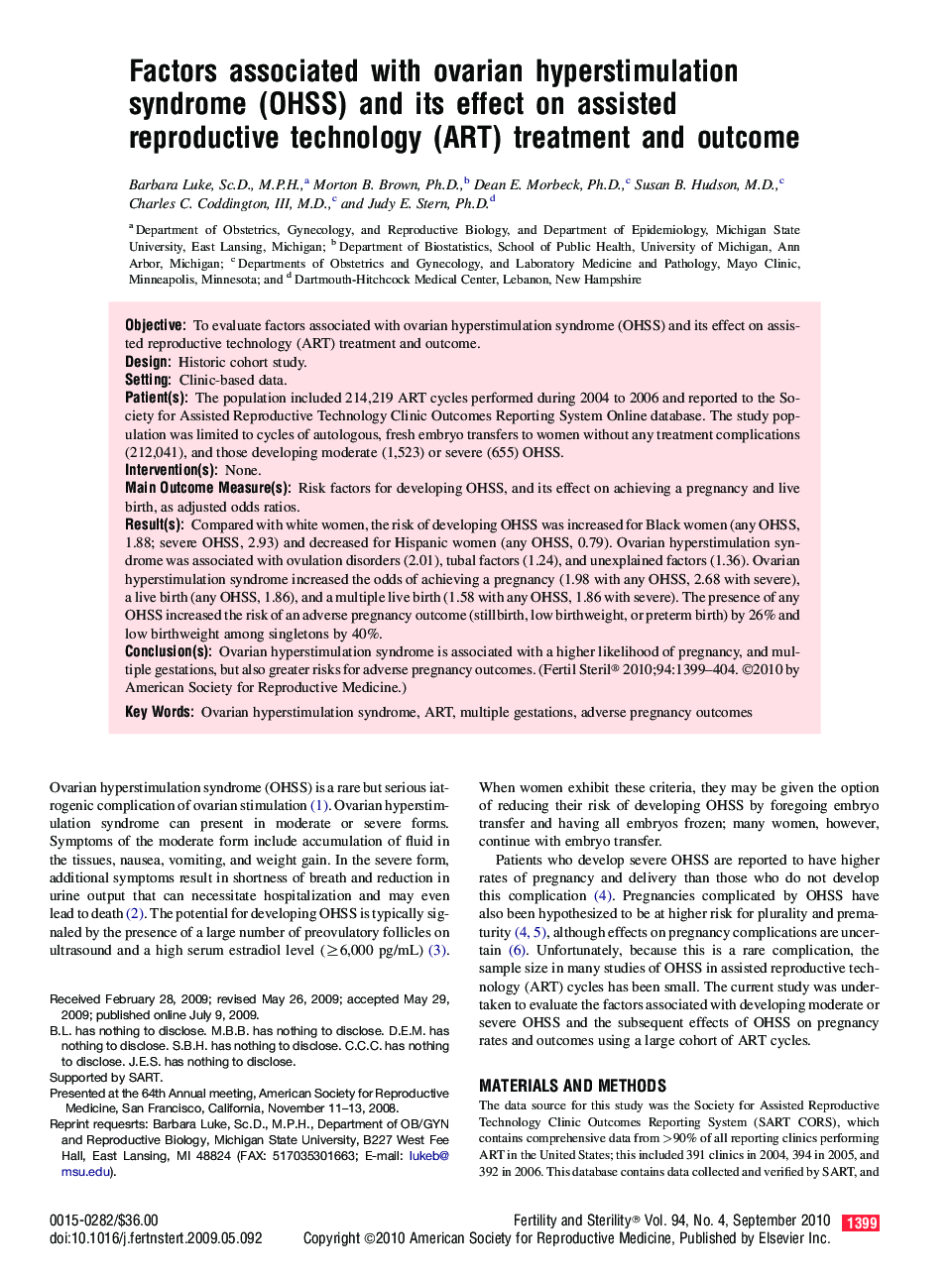| Article ID | Journal | Published Year | Pages | File Type |
|---|---|---|---|---|
| 3938153 | Fertility and Sterility | 2010 | 6 Pages |
ObjectiveTo evaluate factors associated with ovarian hyperstimulation syndrome (OHSS) and its effect on assisted reproductive technology (ART) treatment and outcome.DesignHistoric cohort study.SettingClinic-based data.Patient(s)The population included 214,219 ART cycles performed during 2004 to 2006 and reported to the Society for Assisted Reproductive Technology Clinic Outcomes Reporting System Online database. The study population was limited to cycles of autologous, fresh embryo transfers to women without any treatment complications (212,041), and those developing moderate (1,523) or severe (655) OHSS.Intervention(s)None.Main Outcome Measure(s)Risk factors for developing OHSS, and its effect on achieving a pregnancy and live birth, as adjusted odds ratios.Result(s)Compared with white women, the risk of developing OHSS was increased for Black women (any OHSS, 1.88; severe OHSS, 2.93) and decreased for Hispanic women (any OHSS, 0.79). Ovarian hyperstimulation syndrome was associated with ovulation disorders (2.01), tubal factors (1.24), and unexplained factors (1.36). Ovarian hyperstimulation syndrome increased the odds of achieving a pregnancy (1.98 with any OHSS, 2.68 with severe), a live birth (any OHSS, 1.86), and a multiple live birth (1.58 with any OHSS, 1.86 with severe). The presence of any OHSS increased the risk of an adverse pregnancy outcome (stillbirth, low birthweight, or preterm birth) by 26% and low birthweight among singletons by 40%.Conclusion(s)Ovarian hyperstimulation syndrome is associated with a higher likelihood of pregnancy, and multiple gestations, but also greater risks for adverse pregnancy outcomes.
